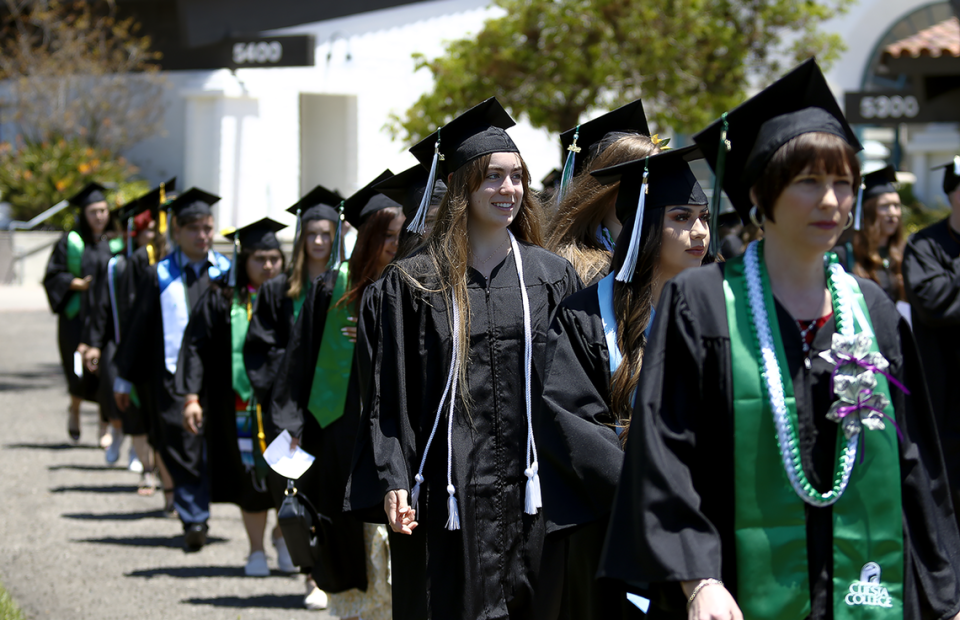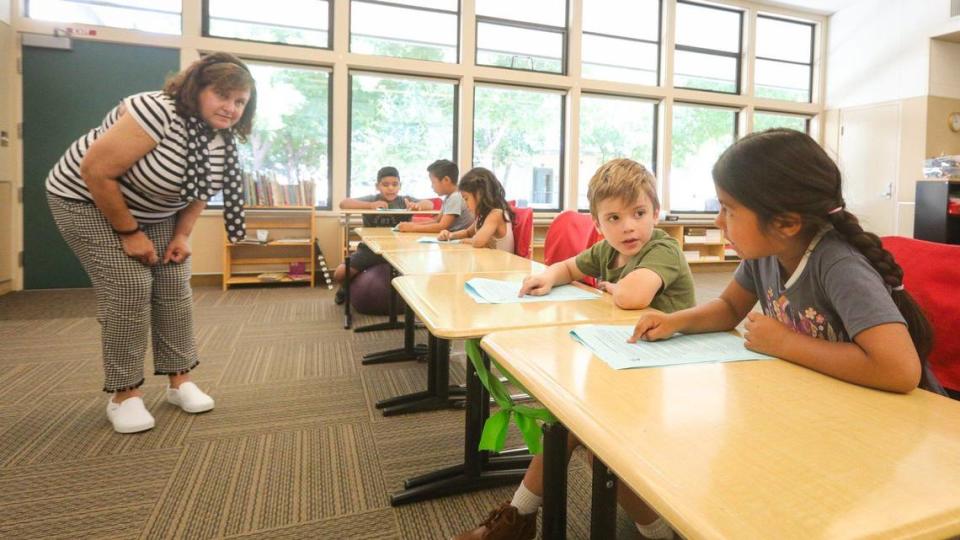Cuesta College could soon start offering a bachelor’s degree in education. Here’s why
San Luis Obispo County is facing a dire teacher shortage — and Cuesta College wants to help.
The San Luis Obispo County community college is proposing to offer a bachelor of science degree in education.
The first-of-its-kind degree at the college — which offers classes at campuses in San Luis Obispo and Paso Robles, along with its South County Center in Arroyo Grande — would provide the necessary education for those seeking to become teachers.
A total of 100 to 175 credentialed teachers are needed annually to educate kids in San Luis Obispo County’s public school districts, according to county Superintendent of Education Jim Brescia.
Providing a four-year education degree at the community college could help fill those gaps in an affordable and accessible way, Cuesta College President Jill Stearns said in an informational meeting about the campaign on Thursday.
“Cuesta College is seeking to solve the biggest workforce challenge in San Luis Obispo County that is centered on a bachelor’s degree,” she said. “When locals earn their bachelor’s degree, get the teaching credential in our local schools, they stay.”
The degree would cost a student a total of $10,560 across all four years, according to Stearns.
That cost could additionally be hugely discounted if the student graduates from a San Luis Obispo County high school and qualifies for the Cuesta College Promise scholarship program, which offers attendees two fee-free years.
After earning their degrees from Cuesta College, students would then need to earn their teaching credentials at another institution, such as Cal Poly San Luis Obispo’s School of Education.
Cuesta College is not the only local community college embarking on a new campaign to offer a bachelor’s degree. Allan Hancock Community College in Santa Maria is also pursuing plans to offer a bachelor of science degree in applied professional studies.
If Cuesta and Hancock earn enough support from the community to establish the degrees, the two institutions can then apply to the California Community College Chancellor’s Office to gain approval.
The chancellor’s office would then share the applications with the California State University and University of California systems so they could determine whether the programs were duplicates of ones offered at either CSU or UC schools.
If the CSU and UC think a program is duplicative, they can send written letters of protest to the CCC Chancellor’s Office. However, the chancellor’s office has the final say and can move ahead with a program even without CSU and UC support.

State legislation paved path for community college bachelor’s degrees
Under California’s Master Plan for Higher Education adopted in 1960, the three systems — California State University, University of California and California Community College — are supposed to serve different segments of the state’s population.
The top 12.5% of all graduating public high school students are eligible for admission to the UC system, the top 33.3% are eligible for admission to the CSU system and everyone 18 years or older who could “benefit from instruction” is eligible to attend a CCC institution, according to the plan.
Additionally, the UC system was designed to serve as the state’s primary public research university system and grant bachelor’s, master’s, doctoral and other professional degrees, while the CSU system was expected to focus on instruction in the liberal arts and sciences and grant bachelor’s and master’s degrees, according to the master plan.
The CCC system, meanwhile, is meant to offer lower-division instruction transferable to four-year colleges, provide remedial and vocational training and grant associate degrees and certificates, the master plan said.
Starting in 2014, however, some California community college were granted the ability to start offering bachelor’s degrees.
At that time, Gov. Jerry Brown signed legislation that established a pilot program allowing 15 community colleges in the state to offer bachelor’s degree programs. That was followed by legislation in 2021 that indefinitely expanded the program and allowed for up to 30 bachelor’s degree programs to be established at community colleges in two application cycles each academic year.
For community colleges to offer four-year degrees, they must first ensure the program does not duplicate an existing bachelor’s degree program offered by state universities.
If the CSU or UC systems believe a proposed degree program at a community college duplicates one of their programs, they can write an objection to the chancellor of the CCC system.
Such an issue recently took place with Feather River College in Plumas County in the rural Sierra Nevadas.
The tiny community college was approved in February to offer a bachelor’s degree in applied fire management — an important degree for the school located in an area prone to devastating wildfires.
That approval came even after CSU officials argued that Feather River’s program would duplicate a newly established applied fire science and management program at Cal Poly Humboldt.
Feather River officials pushed back, saying that the region served by the community college is much different from those served by any CSU campus, according to EdSource reporting.

Cuesta education degree needed to address teacher shortage
Stearn said San Luis Obispo County needs an affordable education degree program to help resolve the region’s ongoing teacher shortage — one that hasn’t been amended by existing universities’ education programs.
“Cuesta College is proposing the bachelor’s degree that will help to close this massive workforce gap and really meet the needs of our local, K-12 districts,” she said during the informational meeting Thursday.
So far, local public school districts have shown support for the new degree program.
“We have amazing students graduating from our district, and giving them another path into the educational field locally would benefit both them and our district,” Lucia Mar Unified School District Superintendent Paul Fawcett wrote in an email to The Tribune.
Lisa Yamashita, assistant superintendent of San Luis Coastal Unified School District, agreed.
“We’re thrilled that the bachelor’s program offered at our nearby community colleges will mean more of our students will have access to a four-year degree program, in addition to Cal Poly’s options, without leaving home,” she wrote in an email to The Tribune. “The education degree will undoubtedly help address the teaching shortage as well as help diversify our teaching and administrative positions, and we believe it will improve the quality of lives and livelihoods on the Central Coast.”
A Cal Poly spokesperson declined to comment when asked by The Tribune about Cuesta College’s proposal for the new degree, instead directing all requests for comments to the CSU system.
A spokesperson for the CSU declined to comment until after they had received the community colleges’ applications.

